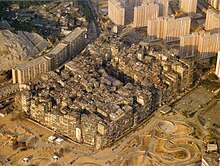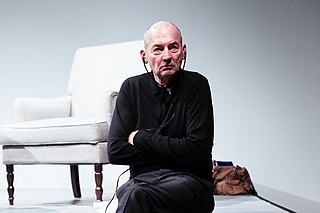
Remment Lucas Koolhaas is a Dutch architect, architectural theorist, urbanist and Professor in Practice of Architecture and Urban Design at the Graduate School of Design at Harvard University. He is often cited as a representative of Deconstructivism and is the author of Delirious New York: A Retroactive Manifesto for Manhattan.

Singapore, officially the Republic of Singapore, is an island country and city-state in maritime Southeast Asia. It is located about one degree of latitude north of the equator, off the southern tip of the Malay Peninsula, bordering the Strait of Malacca to the west, the Singapore Strait to the south along with the Riau Islands in Indonesia, the South China Sea to the east, and the Straits of Johor along with the State of Johor in Malaysia to the north. The country's territory comprises one main island, 63 satellite islands and islets, and one outlying islet; the combined area of these has increased by approximately 25% since the country's independence as a result of extensive land reclamation projects. It has the second highest population density of any country in the world, although there are numerous green and recreational spaces as a result of urban planning. With a multicultural population and in recognition of the cultural identities of the major ethnic groups within the nation, Singapore has four official languages: English, Malay, Mandarin, and Tamil. English is the lingua franca, with its exclusive use in numerous public services. Multi-racialism is enshrined in the constitution and continues to shape national policies in education, housing, and politics.
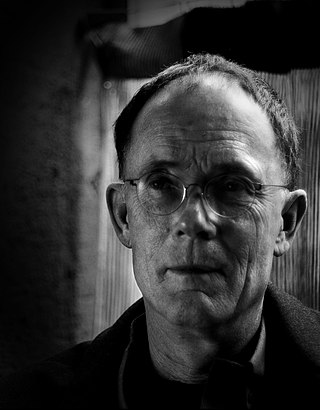
William Ford Gibson is an American-Canadian speculative fiction writer and essayist widely credited with pioneering the science fiction subgenre known as cyberpunk. Beginning his writing career in the late 1970s, his early works were noir, near-future stories that explored the effects of technology, cybernetics, and computer networks on humans, a "combination of lowlife and high tech"—and helped to create an iconography for the information age before the ubiquity of the Internet in the 1990s. Gibson coined the term "cyberspace" for "widespread, interconnected digital technology" in his short story "Burning Chrome" (1982), and later popularized the concept in his acclaimed debut novel Neuromancer (1984). These early works of Gibson's have been credited with "renovating" science fiction literature in the 1980s.
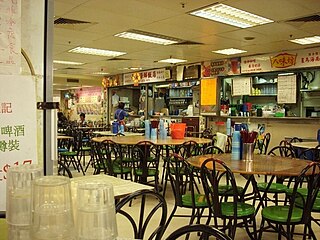
A hawker centre or cooked food centre is an open-air complex commonly found in Hong Kong, Malaysia and Singapore. They were built to provide a more sanitary alternative to mobile hawker carts and contain many stalls that sell different varieties of affordable meals. Dedicated tables and chairs are usually provided for diners.
Technocracy is a form of government in which the decision-makers are selected based on their expertise in a given area of responsibility, particularly with regard to scientific or technical knowledge. Technocracy follows largely in the tradition of other meritocracy theories and assumes full state control over political and economic issues.

Caning is a widely used form of corporal punishment in Singapore. It can be divided into several contexts: judicial, prison, reformatory, military, school and domestic. These practices of caning as punishment were introduced during the period of British colonial rule in Singapore. Similar forms of corporal punishment are also used in some other former British colonies, including two of Singapore's neighbouring countries, Malaysia and Brunei.

Capital punishment in Singapore is a legal penalty. Executions in Singapore are carried out by long drop hanging, and usually take place at dawn. Thirty-three offences—including murder, drug trafficking, terrorism, use of firearms and kidnapping—warrant the death penalty under Singapore law.

Human rights in Singapore refers to rights both legal and in practice. Since Singapore's independence in 1965, the legal rights of its citizens have been set out in the Constitution of Singapore and include rights found in subsequent amendments and referendums. These rights have evolved through Singapore's history as a part of the Straits Settlements, its years under Japanese occupation, its position as a separate self-governing crown colony, and its present day status as a sovereign island country and city-state.
The mass media in Singapore refers to mass communication methods through broadcasting, publishing, and the Internet available in the city-state. Singapore's media environment is a duopoly - it is dominated by two major players, Mediacorp and SPH Media.
"The Gernsback Continuum" is a 1981 science fiction short story by American-Canadian author William Gibson, originally published in the anthology Universe 11 edited by Terry Carr. It was later reprinted in Gibson's collection Burning Chrome, and in Mirrorshades, edited by Bruce Sterling. With some similarity to Gibson's later appraisal of Singapore for Wired magazine in Disneyland with the Death Penalty, as much essay as fiction, it depicts the encounters of an American photographer with the period futuristic architecture of the American Atomic Age and Art Deco when he is assigned to document it for British publishers Barris-Watford, and the gradual incursion of its retro-futuristic hallucinations into his world. "Gernsback" in the title alludes to Hugo Gernsback, the pioneer of early 20th century American pulp magazine science fiction.
Although the legal system of Singapore is a common law system, the criminal law of Singapore is largely statutory in nature and historically derives largely from the Indian penal code. The general principles of criminal law, as well as the elements and penalties of general criminal offences such as assault, criminal intimidation, mischief, grievous hurt, theft, extortion, sex crimes and cheating, are set out in the Singaporean Penal Code. Other serious offences are created by statutes such as the Arms Offences Act, Kidnapping Act, Misuse of Drugs Act and Vandalism Act.
Disneyland is the original Disney theme park in Anaheim, California.

The works of William Gibson encompass literature, journalism, acting, recitation, and performance art. Primarily renowned as a novelist and short fiction writer in the cyberpunk milieu, Gibson invented the metaphor of cyberspace in "Burning Chrome" (1982) and emerged from obscurity in 1984 with the publication of his debut novel Neuromancer. Gibson's early short fiction is recognized as cyberpunk's finest work, effectively renovating the science fiction genre which had been hitherto considered widely insignificant.

Van Tuong Nguyen, baptised Caleb, was an Australian from Melbourne, Victoria convicted of drug trafficking in Singapore. A Vietnamese Australian, he was also addressed as Nguyen Tuong-van (阮祥雲) in the Singaporean media, his name in Vietnamese custom, as well as in most Asian customs.
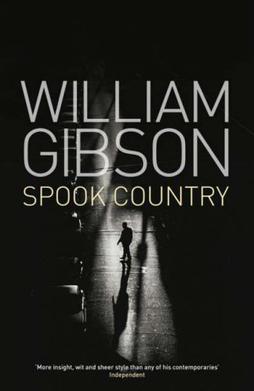
Spook Country is a 2007 novel by speculative fiction author William Gibson. A political thriller set in contemporary North America, it followed on from the author's previous novel, Pattern Recognition (2003), and was succeeded in 2010 by Zero History, which featured much of the same core cast of characters. The plot comprises the intersecting tales of three protagonists: Hollis Henry, a musician-turned-journalist researching a story on locative art; Tito, a young Cuban-Chinese operative whose family is on occasion in the employ of a renegade ex-CIA agent; and Milgrim, a drug-addled translator held captive by Brown, a strangely authoritarian and secretive man. Themes explored include the ubiquity of locative technology, the eversion of cyberspace and the political climate of the United States in the aftermath of the September 11, 2001 attacks.
Boo Junfeng is a Singaporean filmmaker. Boo's films, Sandcastle (2010) and Apprentice (2016) have been screened at the Cannes Film Festival, beginning with his debut film, Sandcastle, which was an Critics' Week nominee.

Distrust That Particular Flavor is a collection of non-fiction essays by American author William Gibson, better known for his speculative and science fiction novels.

Ravi Madasamy, better known as M Ravi, is a Singaporean human rights lawyer and activist. Known for his work as a cause lawyer, he has served as counsel in multiple high-profile court cases in Singapore, many of which have become leading cases in Singaporean constitutional law and Singapore's approach toward capital punishment and LGBT rights.
Kirsten Han is a Singaporean journalist and social activist. In 2017, she co-founded the Malaysian-based online journalism platform New Naratif with Sonny Liew and Thum Ping Tjin, and served as its editor-in-chief till March 2020.

Life imprisonment is a legal penalty in Singapore. This sentence is applicable for more than forty offences under Singapore law, such as culpable homicide not amounting to murder, attempted murder, kidnapping by ransom, criminal breach of trust by a public servant, voluntarily causing grievous hurt with dangerous weapons, and trafficking of firearms, in addition to caning or a fine for certain offences that warrant life imprisonment.



